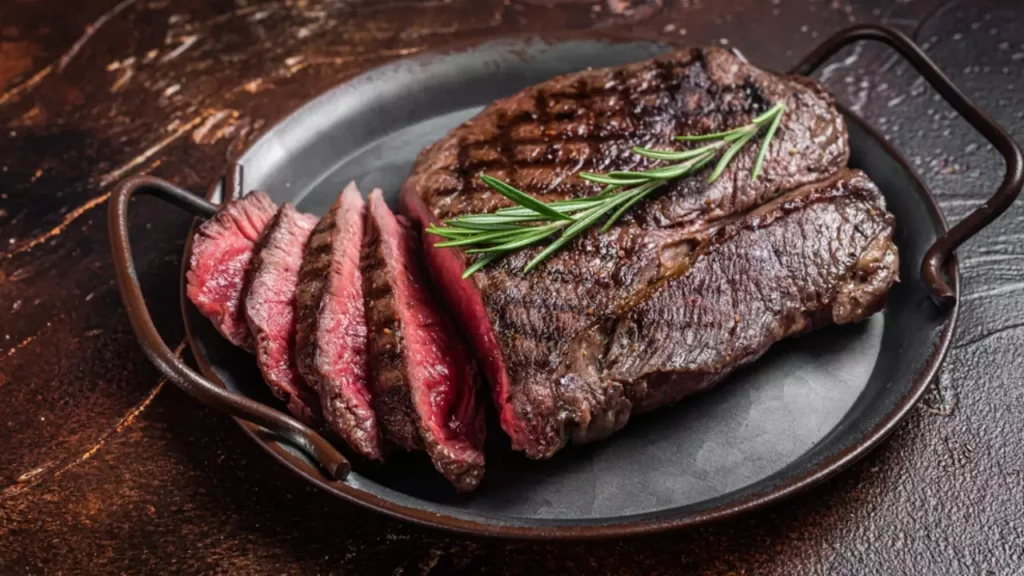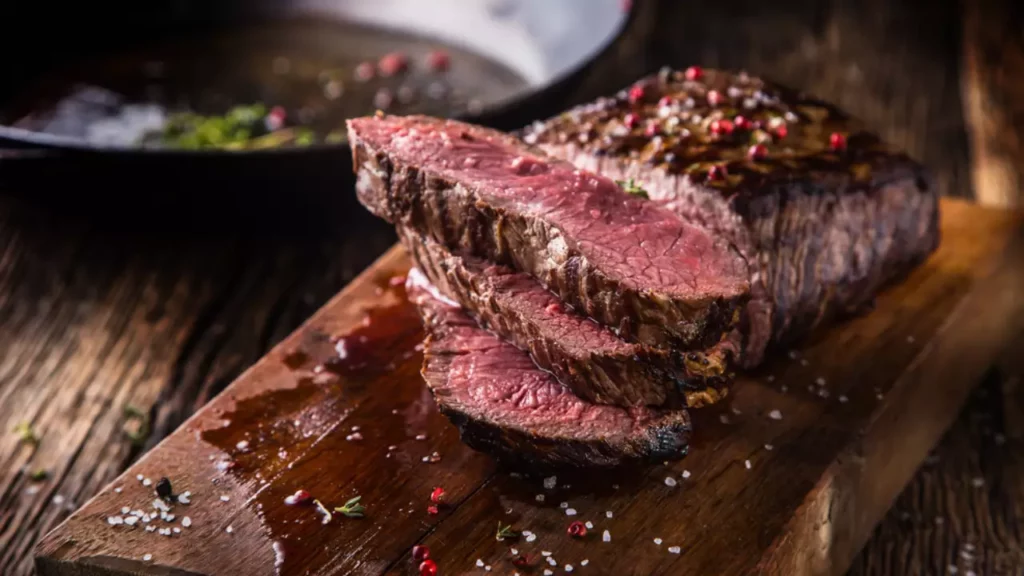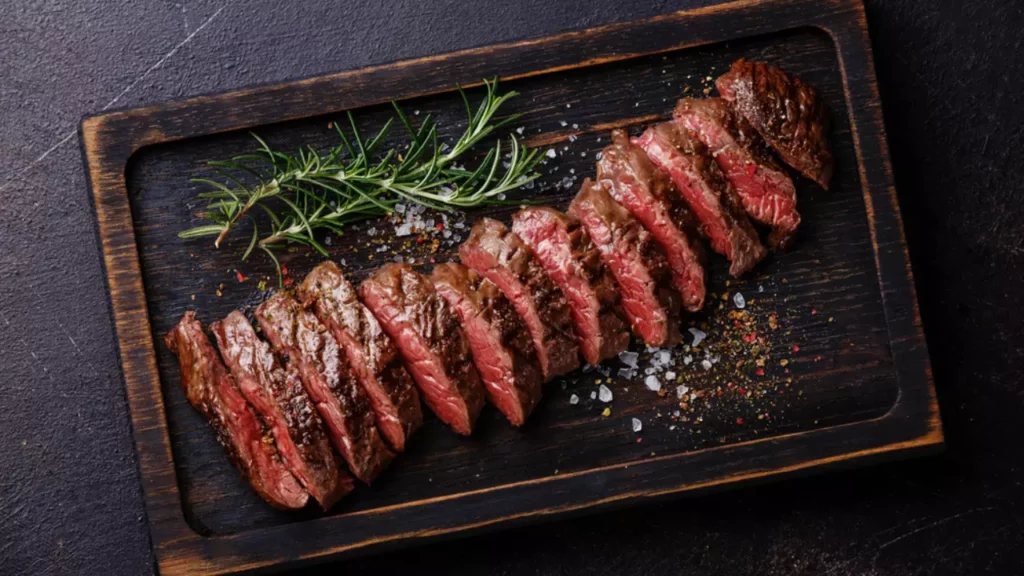Grilling steaks is an art, and choosing the right cut is the brushstroke that defines the masterpiece. In a world sizzling with possibilities, navigating the nuances of steak selection can be daunting. But fear not, as we embark on a journey to unravel the secrets of grilling perfection.
So, what steak is good for grilling? The answer lies not just in the type of cut but in understanding the intricate dance of factors like marbling, thickness, and grade. Today we will explore the grilling cosmos, demystifying the art of selecting steaks that promise a carnivorous symphony of flavors.
We won’t just scratch the surface; we’ll dive deep into the sizzle and sear, unlocking the secrets that turn a simple steak into a gastronomic delight. Prepare to elevate your grilling game as we delve into the world of grilling mastery, where every choice counts and every bite is a celebration of flavor.
Factors Influencing Grilling Success
Grilling, the culinary art that transforms raw meat into a symphony of flavors, is a skillful dance of choices and techniques. As we delve into the factors influencing grilling success, envision your grill as a stage and each steak as a performer, each with its unique characteristics and requirements.

Cut Matters
In the realm of grilling, not all steaks are created equal. The choice of cut is the opening act, setting the stage for a flavorful performance. Let’s dissect the nuances of different steak cuts, unraveling their individual charms.
Ribeye, the Bold Entertainer
- Ribeye, hailed for its bold flavor and ample marbling, takes center stage on the grill.
- Marbling Matters: The intricate web of fat within the meat, known as marbling, is the secret sauce for flavor and tenderness.
- Grilling Pro Tip: Opt for Ribeye cuts with abundant marbling to ensure a succulent and richly flavored result.
Sirloin, the Lean Contender
- Sirloin, a leaner option, offers a balance between flavor and affordability.
- Affordability Advantage: Sirloin’s lean profile makes it a budget-friendly choice for grilling.
- Grilling Mastery: To prevent toughness, grill sirloin to medium doneness and slice against the grain for optimal tenderness.
Filet Mignon, the Refined Virtuoso
- Filet Mignon, synonymous with luxury, is a premium choice for the discerning griller.
- Tenderness Defined: Filet Mignon is celebrated for its unparalleled tenderness and exquisite taste.
- Grilling Excellence: Achieve perfection by searing at high heat and finishing over indirect heat for optimal tenderness.
T-Bone, the Dual Performer
- The T-Bone, featuring both the strip and tenderloin, offers a two-in-one grilling experience.
- Strip and Tenderloin Harmony: Grilling methods that balance the characteristics of both the strip and tenderloin.
- Even Doneness: Master the art of grilling T-Bone by adjusting the heat to ensure both cuts reach perfection simultaneously.
Thickness and Cooking Time
As we transition to the second act, the thickness of your chosen steak takes the spotlight. The interplay between thickness and cooking time is a critical element in the grilling saga.
Impact of Steak Thickness on Cooking
- The thickness of your steak dictates the duration of its dance on the grill.
- Thin and Quick: Thin steaks cook rapidly, while thicker cuts require a more leisurely grill to achieve even doneness.
- Precision Reminder: To avoid overcooking or undercooking, utilize a meat thermometer for precise temperature measurement.
General Guidelines for Cooking Times
- A quick reference guide for achieving the perfect doneness based on steak thickness.
- Thin (1/2 inch): 1-2 minutes per side for a quick and juicy result.
- Medium (1 inch): 4-5 minutes per side for a balance of sear and tenderness.
- Thick (1.5 inches or more): 6-8 minutes per side, using the thermometer for precision.
Importance of Using a Meat Thermometer
- The unsung hero of grilling precision, the meat thermometer ensures your steak hits the right notes.
- Temperature Accuracy: Achieve the desired doneness—whether it’s medium-rare, medium, or well-done—with confidence.
- Grilling Mastery: Treat your meat thermometer as a trusted companion, guaranteeing your steak’s perfection.
Understanding Steak Grades
In the third act, we unveil the grading system—a silent influencer that determines the quality, tenderness, and flavor profile of your chosen steak.
Explanation of Steak Grading System
- A brief exploration of the grading system, from Select to Prime.
- Select: Leaner with less marbling.
- Choice: Moderate marbling for enhanced flavor.
- Prime: Abundant marbling, delivering the pinnacle of tenderness and taste.

How Grade Influences Tenderness and Flavor
- The grade of your steak is a direct reflection of its potential tenderness and flavor.
- Prime Pleasures: Opting for Prime-grade steaks ensures a succulent and rich grilling experience.
- Grilling Excellence: Let the grade guide your choice, allowing for a heightened culinary experience.
Recommendations for the Best Grades for Grilling
- Expert recommendations on the best grades for achieving grilling excellence.
- Ribeye: Prime or Choice grades, embracing the marbling for optimum flavor.
- Sirloin: Choice grade for a leaner yet flavorful grilling experience.
- Filet Mignon: Prime for the epitome of tenderness and refined taste.
Preparation and Seasoning
As the final act approaches, let’s delve into the preparations and seasonings that elevate your steak from raw simplicity to grilled perfection.
Importance of Bringing Steak to Room Temperature Before Grilling
- A critical step in the prelude to grilling greatness.
- Even Cooking: Room-temperature steaks ensure more consistent cooking from edge to center.
- Pro Tip: Allow your steak to rest on the counter for about 30 minutes before grilling.
Recommended Seasonings and Marinades for Grilling Steaks
- The seasoning symphony enhances the natural flavors of your chosen cut.
- Simple Elegance: A classic mix of salt and pepper accentuates the steak’s inherent taste.
- Garlic and Herb Marinade: Elevate your grilling game with a marinade featuring garlic, herbs, and olive oil.
Tips for Enhancing Flavor Without Overpowering the Natural Taste
- The delicate balance between enhancement and overpowering.
- Less is More: Allow the steak’s natural flavors to shine; avoid overwhelming it with too many seasonings.
- Flavorful Precision: Experiment with restraint, ensuring each bite is a celebration of the steak’s essence.
Grilling Techniques and Tips
In the realm of grilling mastery, honing the right techniques can turn a casual cookout into a culinary spectacle. Let’s delve into the final chapters of our grilling saga, exploring essential tips that ensure your steak takes center stage on the grill.
1. Direct vs. Indirect Heat
The grilling stage is the battleground where direct and indirect heat vies for dominance, each playing a pivotal role in the quest for the perfect steak.
Searing Brilliance
- Direct heat sets the scene for searing brilliance, a technique that defines the outer layer of your steak.
- Advantages Unveiled: Searing at high temperatures creates a flavorful crust, locking in juices and enhancing the overall grilling experience.
- Grilling Pro Tip: After the initial sear, finishing over indirect heat ensures the steak cooks evenly from edge to center, achieving a perfect sear and tenderness combination.
Sear and Soar
- The dual technique of searing and soaring to success is the griller’s secret weapon.
- Juices Locked In Searing, when followed by indirect heat, locks in juices while ensuring even cooking.
- Grilling Mastery: Whether it’s a ribeye or sirloin, mastering this dual technique is the key to grilling success.
2. Resting and Slicing
The grand finale of grilling excellence involves the important steps of resting and slicing—a delicate dance that transforms your steak into a masterpiece.
Patient Perfection
- The power of patience unfolds as you understand why letting your steak rest is an essential step in the grilling process.
- Juice Redistribution: Resting allows the juices to redistribute evenly, ensuring every slice is moist, flavorful, and a true reflection of your grilling finesse.
- Expert Insight: For optimal results, let your steak rest for at least five minutes before slicing.
Slicing Artistry
- The art of slicing against the grain is a technique that separates amateurs from true grilling maestros.
- Enhanced Tenderness: Slicing against the grain shortens muscle fibers, resulting in a more tender bite.
- Precision Matters: A well-rested and precisely sliced steak is the hallmark of grilling prowess, creating an unparalleled dining experience.
3. Grill Maintenance
Behind every successful grill session lies the often-overlooked importance of grill maintenance—a backstage secret to consistent grilling results.
Clean Canvas
- Quick tips on maintaining a pristine grilling canvas.
- Regular Cleaning: After each use, ensure your grill is free of residue and debris.
- Proper Oiling: Properly oiling the grates prevents sticking and enhances the grilling experience.
Even Heat, Even Treat
- Consistency is the key to grilling perfection, and it starts with even heat distribution.
- Periodic Maintenance: Regular checks and adjustments guarantee your grill distributes heat evenly, preventing uneven cooking.
- Grilling Guru Tip: A well-maintained grill ensures every treat from the grates is a consistent delight.

Frequently Asked Questions
Q: What role does marbling play in choosing a steak for grilling?
Marbling, the intricate patterns of fat within the meat, is a griller’s secret weapon. It enhances flavor and tenderness during grilling by melting into the steak, infusing it with succulence. Opt for cuts with generous marbling for a melt-in-your-mouth experience.
Q: How does steak thickness affect grilling time?
The thickness of your steak is a essential factor in determining grilling time. Thicker steaks require longer cooking periods for even doneness. Use a meat thermometer to gauge internal temperature, ensuring your steak reaches the perfect medium-rare, medium, or well-done state.
Q: Can you recommend budget-friendly steaks ideal for grilling?
Absolutely! Sirloin steaks offer a fantastic balance between affordability and flavor. Their leaner profile makes them ideal for grilling, and with the right techniques, you can achieve a deliciously tender result without breaking the bank.
Q: Why is letting the steak rest after grilling important?
Allowing your steak to rest after grilling is important for optimal juiciness. Resting allows the juices to redistribute, ensuring each slice remains moist. Patience is the key; resist the urge to cut into your steak immediately for a dining experience that’s both flavorful and succulent.
Conclusion
In the realm of grilling, choosing the perfect steak is an art form. What steak is good for grilling, you ask? It’s a harmonious blend of cut, marbling, and preparation that transforms an ordinary barbecue into a culinary masterpiece.
So, fire up those grills, savor the journey, and let the symphony of flavors unfold with each perfectly grilled bite. What steak is good for grilling? The one you choose, prepared with care and grilled to perfection.
[…] A balanced marinade includes olive oil, garlic, herbs, and acidity from ingredients like citrus. The key is to achieve a harmonious blend of sweet, savory, and acidic flavors. […]